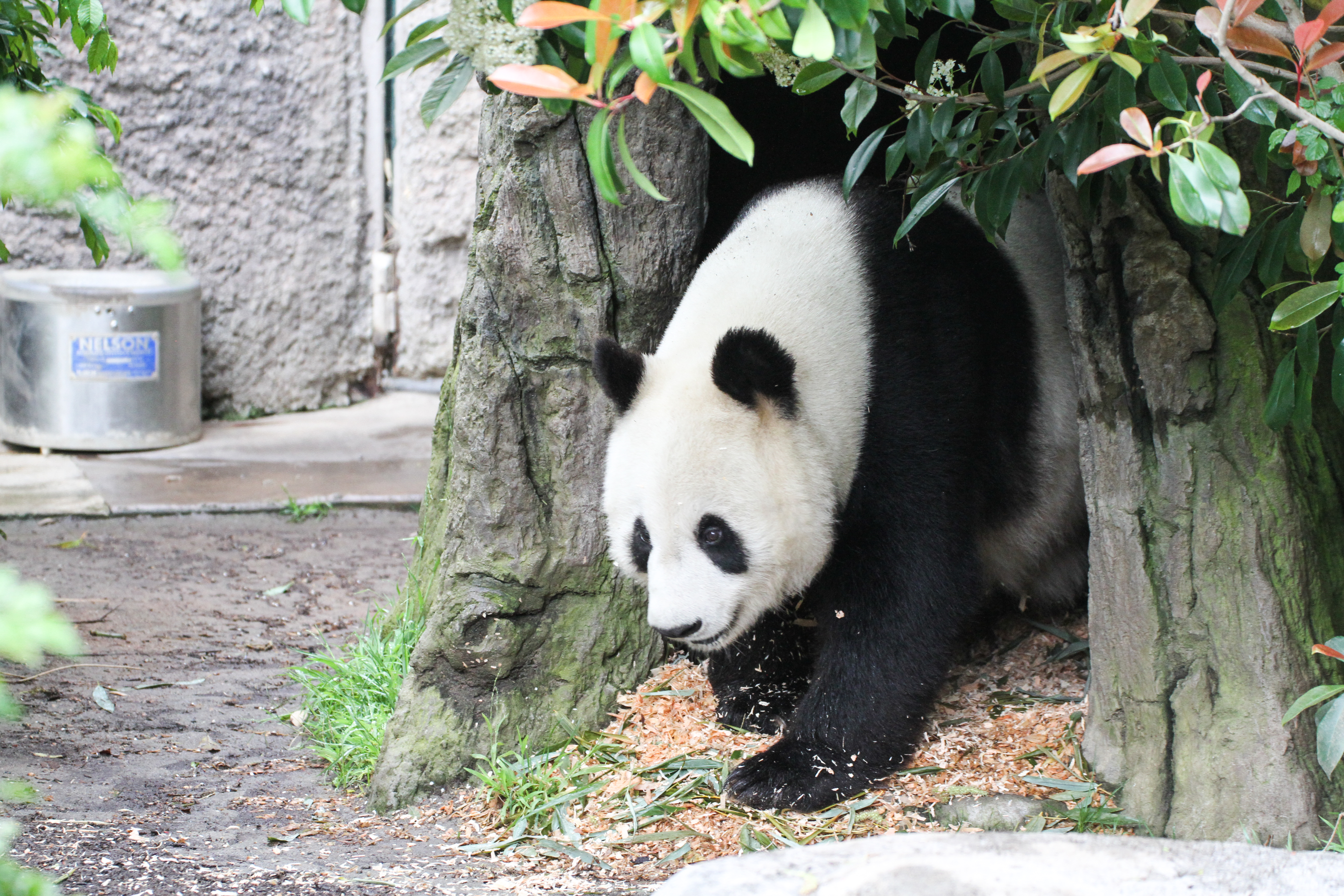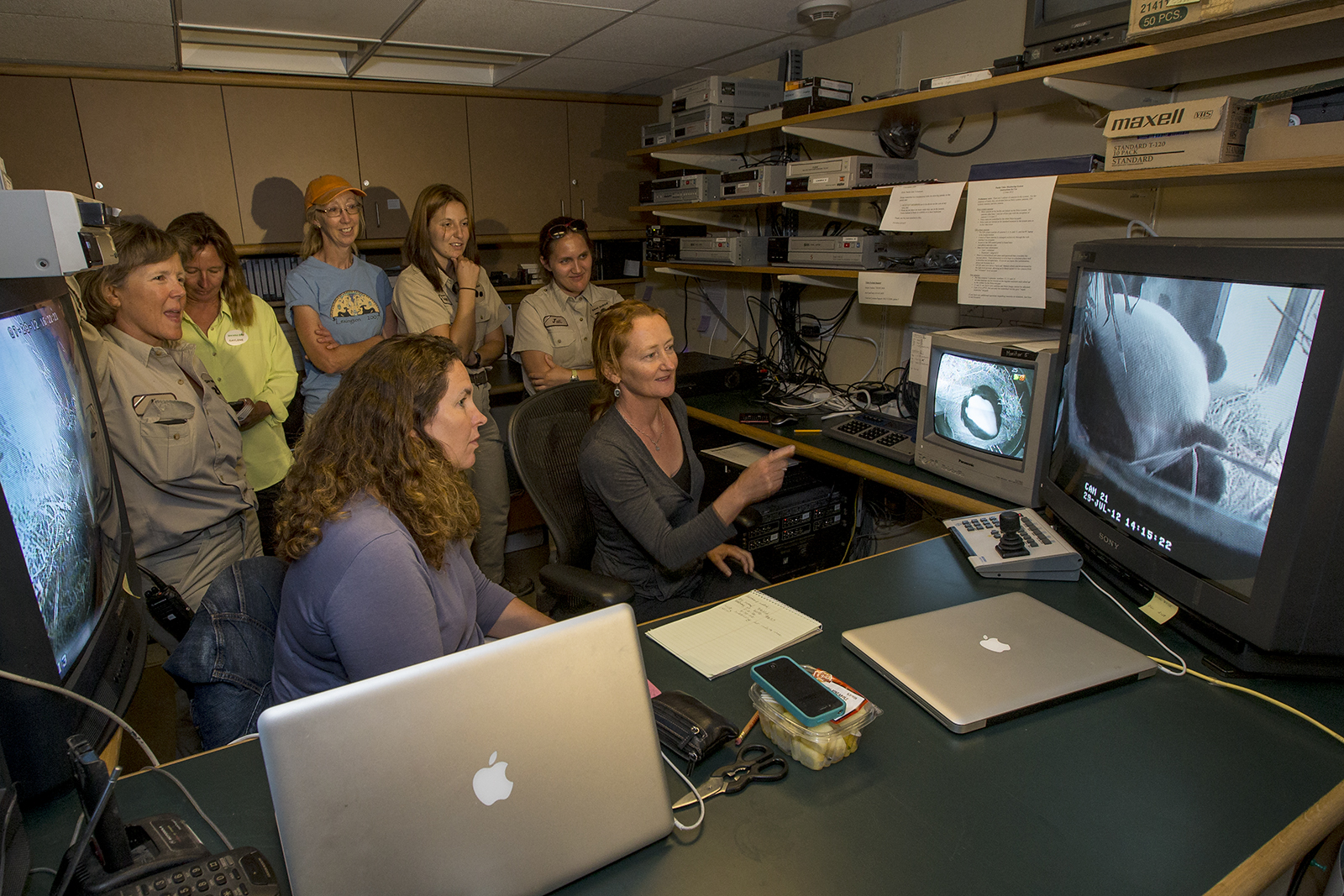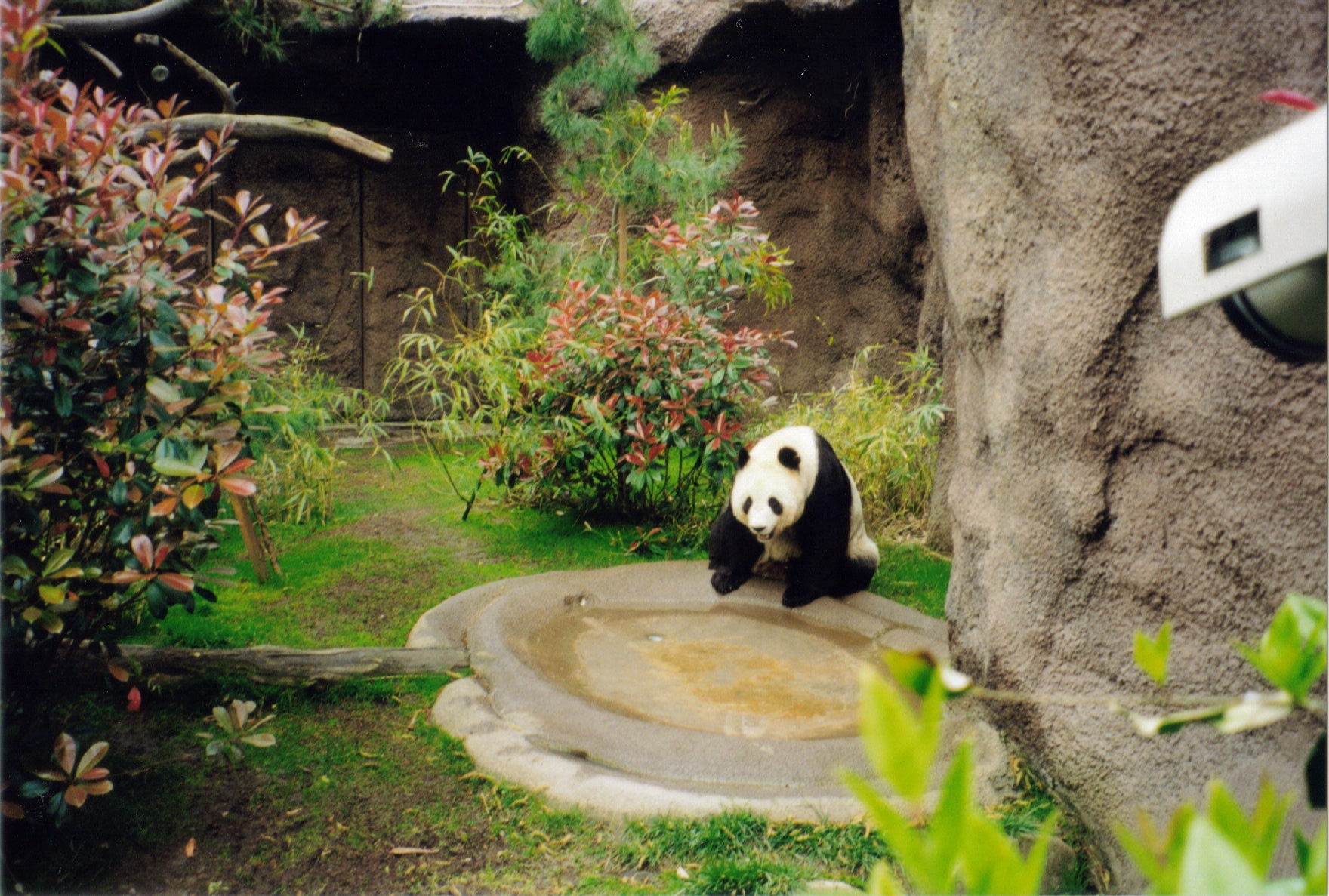Tribute to Dong Dong
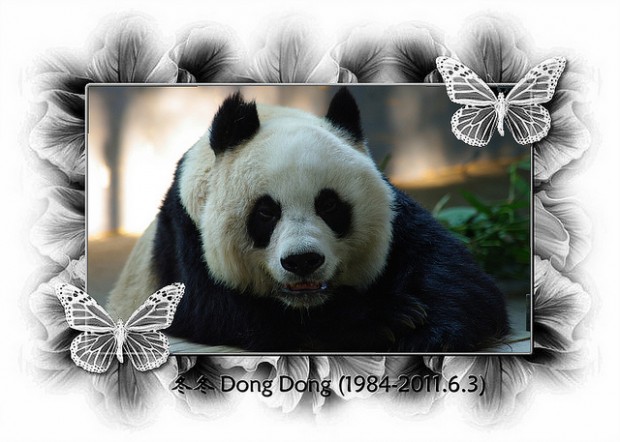
Dong Dong died on June 3, 2011. Suzanne Hall of San Diego Zoo wrote this tribute to their panda mother Bai Yun’s mother.
We have received news from various sources that Bai Yun’s mother Dong Dong passed away last week. Dong Dong has a bit of a special place in the lives of our San Diego Zoo bears in that she was the grandmother of all panda cubs born here. In honor of her passing, I thought I might share a few anecdotes about her with you.
The San Diego Zoo sent me to Wolong, China, in 2000 to study maternal care in giant pandas. Although I had worked with pandas Bai Yun and Shi Shi for a few years in San Diego, Wolong provided a great opportunity to see individual variation in both behavioral and physiological traits among a large group of pandas. Observing Bai Yun’s parents was a real education in variation.
When I first met Pan Pan, Bai Yun’s father, I was struck by the similarities between them. Pan Pan was big, with long limbs and a characteristic bump on the bridge of his nose we have learned to associate with his lineage. He was bold and confident. Bai Yun seemed to be cut from the same cloth as Pan Pan.
And then I met Dong Dong. I was a little taken aback that she could be the mother of our big, bold Bai Yun. Dong Dong was small, low to the ground, and with a belly that swayed down. She seemed timid and reclusive. When she first saw me, she huffed quietly and retreated back to her bedroom. In the three months I lived at the Wolong facility, I rarely saw her out of her bedroom area. Clearly, Bai Yun most closely resembled her father, in both size and spirit.
Before that trip to Wolong, I was assisting in a trial study of scent presentations in San Diego, utilizing Bai Yun and Shi Shi. We would present them with a small wooden board, painted with urine collected from bears in Wolong. Ultimately, the purpose of the study was to see what kind of information the bears could extract from the urine scent. Bai Yun could always be counted on to interact with the board for a moment or two, at least giving it a good sniff before moving on to finding her breakfast.
One day, I presented Bai Yun with a board and was surprised by her response. She sniffed and licked the board, then picked it up and sniffed it again, intensely. She continued to hold the board for some time, sniffing and licking and even performing a flehmen to bring the scent into her vomeronasal organ. Then she started anointing herself with the board, rubbing it over her ears and neck vigorously. In all, she probably spent more than 10 minutes with that board. I couldn’t see why her reaction to this scent might have been so strong, so I looked back at the urine vial I had poured the scent from: it was labeled “Dong Dong.” Years after leaving Wolong, and long after she had been weaned, Bai Yun seemed to recognize the odor of her mother.
Dong Dong lived to become a fairly old bear, probably close to 30 years of age. We don’t know for certain, because she was wild caught as an adult. She lived the last few years of her life in the same facility that had housed Shi Shi, the male who had been Bai Yun’s neighbor in San Diego. Those old bears are gone, but not forgotten, as their lineages live on in the many cubs produced by Bai Yun and Hua Mei, daughter of Shi Shi and Bai Yun, over the years. And if we have the pleasure of watching another newborn panda cradled in Bai Yun’s arms this August, we will be witnessing the strong bond between mother and cub that Dong Dong forged with Bai Yun so long ago.
Suzanne Hall, senior research technician at the San Diego Zoo
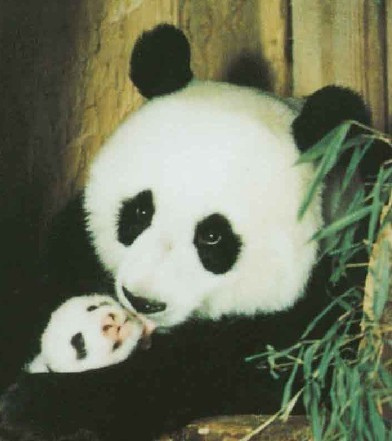
Dong Dong & Bai Yun







